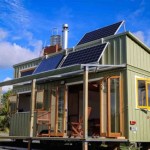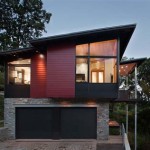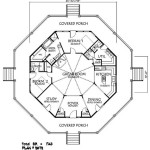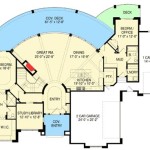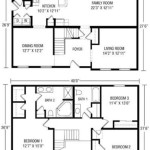Small affordable house plans are blueprints for compact and cost-effective residential structures designed to meet the needs of individuals, couples, or families with limited budgets. These plans prioritize functionality and space optimization, while adhering to strict cost constraints. For instance, a tiny house plan with a footprint of 200-400 square feet may incorporate a sleeping loft, a kitchenette, and a bathroom, providing essential living amenities in a highly efficient layout.
Building a home based on small affordable house plans offers numerous advantages. Not only do they reduce construction costs by minimizing material usage and labor, but they also promote sustainable living by conserving resources and minimizing energy consumption. Moreover, these plans often feature clever design elements that enhance space utilization and create a cozy and inviting ambiance.
In the following sections, we will delve deeper into the key considerations when selecting small affordable house plans, explore various plan options, and provide tips on optimizing space and minimizing costs. We will also showcase some innovative and inspiring designs that demonstrate how compact living can be both comfortable and stylish.
To ensure the success of your small affordable house plan, consider these 8 crucial points:
- Define space needs
- Set budget and stick to it
- Choose energy-efficient materials
- Maximize natural light
- Declutter and optimize storage
- Consider multi-purpose furniture
- Explore pre-fab or modular options
- Seek professional advice when needed
By adhering to these guidelines, you can create a small affordable home that meets your needs, respects your budget, and provides a comfortable and sustainable living environment.
Define space needs
The foundation of any successful small affordable house plan lies in accurately defining your space needs. This involves carefully considering the number of occupants, their lifestyle habits, and the intended use of each room. Begin by making a list of the essential spaces you require, such as bedrooms, bathrooms, a kitchen, and a living area. Determine the minimum acceptable size for each space based on your daily routines and comfort level.
Next, think about how you can maximize space utilization through clever design strategies. Consider open floor plans that eliminate unnecessary walls and create a sense of spaciousness. Incorporate built-in storage solutions, such as shelves, drawers, and cabinets, to keep clutter at bay and make the most of every nook and cranny. By planning ahead and prioritizing functionality, you can create a small home that feels comfortable and accommodating.
Furthermore, consider the potential for dual-purpose spaces. For example, a guest room can double as a home office when not in use. A loft area can serve as both a sleeping space and a cozy reading nook. By thinking creatively and embracing flexibility, you can design a small home that meets your evolving needs without compromising on comfort or style.
Finally, don’t forget to factor in outdoor space, even if it’s limited. A small patio or balcony can provide a valuable extension of your living area and enhance your overall enjoyment of your home. By carefully defining your space needs and employing smart design strategies, you can create a small affordable house plan that perfectly suits your lifestyle and provides a comfortable and inviting living environment.
Set budget and stick to it
Establishing a realistic budget and adhering to it is paramount when building a small affordable house. This involves carefully considering all costs associated with the project, including land acquisition, materials, labor, permits, and utilities. To ensure financial viability, it’s crucial to conduct thorough research and consult with professionals to obtain accurate estimates.
- Plan meticulously: Before breaking ground, create a detailed plan that outlines every aspect of the project, from design to construction. This plan should include a comprehensive list of materials and estimated costs, as well as a timeline for completion. By planning meticulously, you can avoid costly surprises and stay within your budget.
- Negotiate and compare: When selecting contractors and suppliers, don’t hesitate to negotiate prices and compare quotes. Obtain multiple bids to ensure you’re getting the best value for your money. Be prepared to compromise on certain aspects of the design or materials to stay within your budget.
- Control expenses: Throughout the construction process, monitor expenses closely and make adjustments as needed. Keep track of all receipts and invoices to ensure accurate accounting. Consider cost-saving measures such as using recycled materials or opting for energy-efficient appliances.
- Seek financial assistance: Explore government programs, grants, or low-interest loans that may be available to assist with the cost of building an affordable home. Research various financing options and choose the one that best suits your financial situation.
By setting a realistic budget and adhering to it, you can ensure that your small affordable house plan remains financially feasible and stress-free throughout the construction process.
Choose energy-efficient materials
In the pursuit of creating a sustainable and cost-effective small affordable house, selecting energy-efficient materials is a crucial step. Energy-efficient materials can significantly reduce energy consumption, leading to lower utility bills and a smaller carbon footprint.
When choosing materials for your small affordable house plan, consider the following factors:
- Insulation: Proper insulation is key to maintaining a comfortable indoor temperature while minimizing heat loss in the winter and heat gain in the summer. Opt for high-quality insulation materials with a high R-value, indicating their resistance to heat flow. Common insulation options include fiberglass, cellulose, and spray foam.
- Windows and doors: Windows and doors are major sources of heat loss in a home. Choose energy-efficient windows and doors with double or triple glazing, low-emissivity (low-e) coatings, and tight seals to minimize air leakage.
- Roofing: The roof plays a significant role in regulating indoor temperature. Opt for roofing materials with high solar reflectance and thermal resistance. Consider cool roofs or green roofs to reduce heat absorption and improve energy efficiency.
- Appliances: Energy-efficient appliances can make a substantial difference in your energy consumption. Look for appliances with the Energy Star label, indicating they meet strict energy efficiency standards set by the U.S. Environmental Protection Agency (EPA).
By choosing energy-efficient materials for your small affordable house plan, you can create a home that is not only comfortable and affordable but also environmentally responsible.
In addition to the materials mentioned above, consider incorporating passive solar design principles into your home’s design. Passive solar design utilizes natural elements, such as sunlight and thermal mass, to heat and cool your home naturally, further reducing your reliance on energy-consuming systems.
By carefully selecting energy-efficient materials and employing passive solar design strategies, you can minimize your energy consumption, save money on utility bills, and create a more sustainable and comfortable living environment.
Maximize natural light
Incorporating ample natural light into your small affordable house plan is essential for creating a bright, airy, and energy-efficient living space. Natural light reduces the need for artificial lighting, lowers energy consumption, and enhances overall well-being.
- Windows and skylights: Strategically placed windows and skylights allow natural light to penetrate deep into the home’s interior, reducing the need for artificial lighting during the day. Consider installing large windows on south-facing walls to maximize sunlight exposure. Skylights are also an excellent way to bring natural light into interior rooms or areas with limited wall space.
- Light-colored walls and ceilings: Light-colored walls and ceilings reflect natural light more effectively, making rooms appear brighter and more spacious. Choose light shades of paint or wallpaper with a high light reflectance value (LRV) to enhance the natural light distribution in your home.
- Open floor plan: An open floor plan allows natural light to flow freely throughout the home. By minimizing the use of walls and partitions, you can create a more open and airy living space that is flooded with natural light.
- Exterior shading: While natural light is desirable, it’s important to control excessive heat gain during the summer months. Consider installing exterior shading devices such as awnings, blinds, or shutters to regulate the amount of sunlight entering the home. These devices can help reduce glare and prevent overheating, while still allowing natural light to filter in.
By maximizing natural light in your small affordable house plan, you can create a home that is not only energy-efficient but also bright, inviting, and uplifting.
Declutter and optimize storage
In a small affordable house, every square foot counts. Decluttering and optimizing storage are essential for creating a comfortable and functional living space. Here are some tips to help you get started:
- Declutter regularly: Regularly go through your belongings and get rid of anything you don’t need or use anymore. Donate, sell, or discard items that are taking up valuable space.
- Maximize vertical space: Utilize vertical space by installing shelves, drawers, and cabinets that reach all the way to the ceiling. Stackable bins and containers are also great for maximizing vertical space in closets and pantries.
- Use multi-purpose furniture: Choose furniture that serves multiple functions. For example, an ottoman with built-in storage can double as a coffee table and a place to store blankets or pillows. A bed with drawers underneath can provide additional storage for linens or seasonal items.
- Take advantage of unused spaces: Utilize unused spaces, such as the area under the stairs or the space above cabinets, for storage. Install shelves, drawers, or baskets to make use of these often-overlooked areas.
By decluttering and optimizing storage, you can create a more spacious and organized small affordable home that meets your needs and provides a comfortable and clutter-free living environment.
Consider multi-purpose furniture
In a small affordable house, every piece of furniture should serve a purpose. Multi-purpose furniture is a great way to maximize space and functionality.
- Ottoman with storage: An ottoman with built-in storage can double as a coffee table and a place to store blankets, pillows, or other items. This is a great way to save space in a small living room or family room.
- Bed with drawers: A bed with drawers underneath can provide additional storage for linens, seasonal items, or other belongings. This is a great way to maximize space in a small bedroom.
- Sofa bed: A sofa bed can double as a couch and a bed, making it a great option for small apartments or homes with limited space. This is a great way to accommodate guests without having to sacrifice a separate bedroom.
- Wall-mounted desk: A wall-mounted desk can fold up when not in use, saving space in a small home office or bedroom. This is a great way to create a dedicated workspace without taking up too much floor space.
By choosing multi-purpose furniture, you can create a more functional and space-efficient small affordable home.
Explore pre-fab or modular options
Prefabricated (pre-fab) and modular homes offer a range of benefits for those seeking small affordable housing solutions. These homes are constructed in a controlled factory environment, allowing for greater efficiency and quality control than traditional on-site construction methods. Here are some key details to consider:
Cost-effectiveness: Pre-fab and modular homes are generally more cost-effective than site-built homes due to the economies of scale achieved through factory production. The controlled environment also reduces waste and labor costs.
Time efficiency: Pre-fab and modular homes can be constructed much faster than site-built homes, as the majority of the work is completed in the factory. This can significantly reduce the time it takes to move into your new home.
Customization: While pre-fab and modular homes are often associated with limited design options, many builders offer a wide range of customization possibilities. You can choose from a variety of floor plans, exterior finishes, and interior features to create a home that meets your specific needs and preferences.
Sustainability: Pre-fab and modular homes are often more sustainable than site-built homes due to the use of energy-efficient materials and construction practices in the factory environment. They can also be designed to meet specific green building standards.
Seek professional advice when needed
When designing and building a small affordable house, seeking professional advice can be invaluable. Here are some key reasons why:
Ensuring structural integrity: A professional architect or engineer can ensure that your house plan is structurally sound and meets all applicable building codes. They can also provide guidance on the best materials and construction methods to use for your specific location and climate.
Optimizing space and functionality: A professional designer can help you create a floor plan that maximizes space and functionality, even in a small home. They can also provide suggestions for clever storage solutions and multi-purpose furniture to make the most of every square foot.
Navigating building codes and permits: Building codes and permit requirements can vary significantly from one municipality to another. A professional can help you navigate these regulations and ensure that your house plan complies with all applicable laws.
Saving time and money: While hiring a professional may involve an upfront cost, it can actually save you time and money in the long run. A well-designed house plan will help you avoid costly mistakes during construction and ensure that your home is built to last.
In addition to architects and engineers, other professionals who can provide valuable advice for small affordable house plans include:
- Interior designers: Interior designers can help you create a space-efficient and stylish interior design for your home.
- Landscape architects: Landscape architects can help you design a beautiful and functional outdoor space that complements your home.
- Financial advisors: Financial advisors can help you develop a budget for your home building project and explore financing options.
By seeking professional advice when needed, you can increase the chances of creating a small affordable house that meets your needs, respects your budget, and provides a comfortable and stylish living environment.










Related Posts

